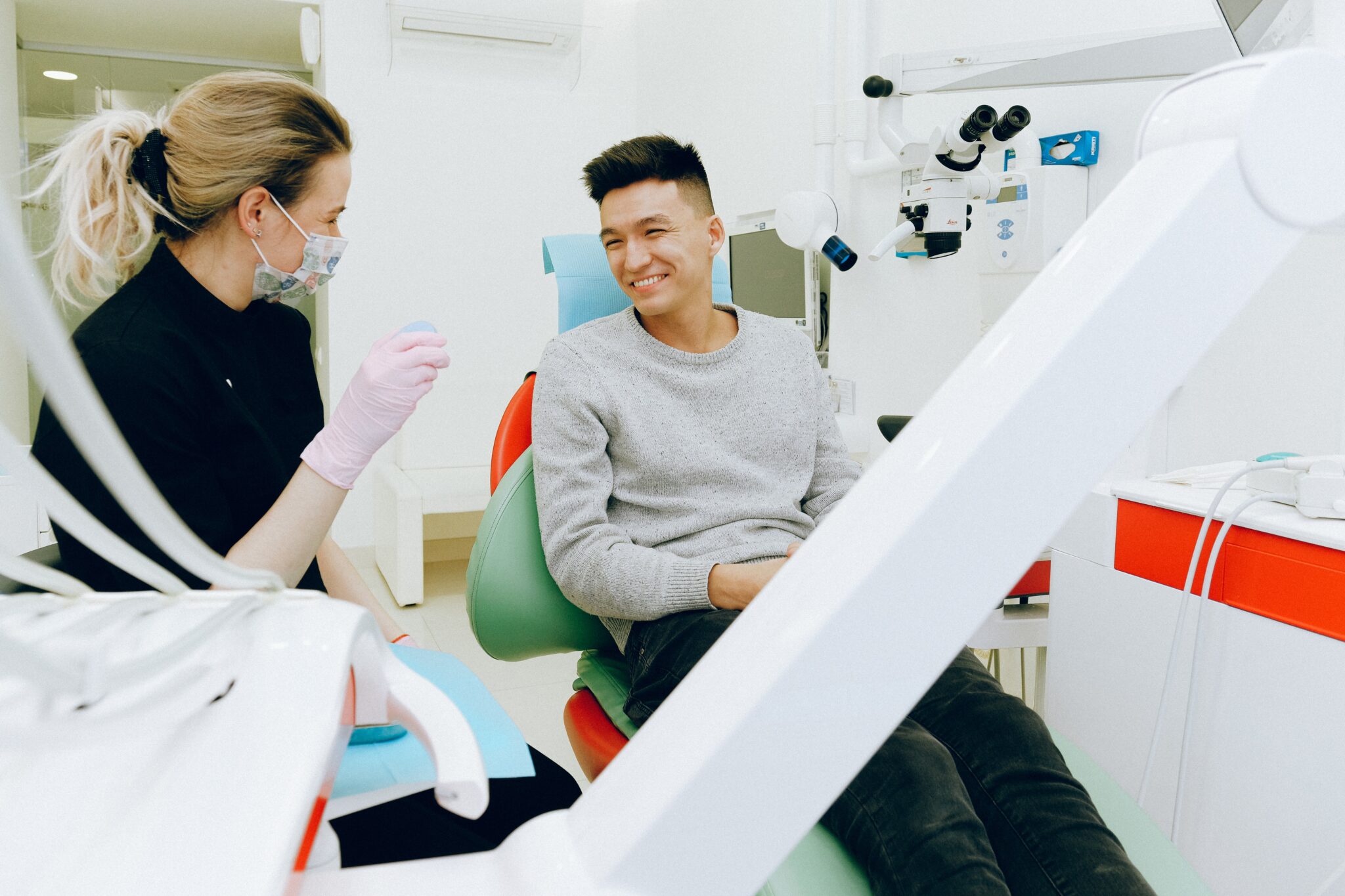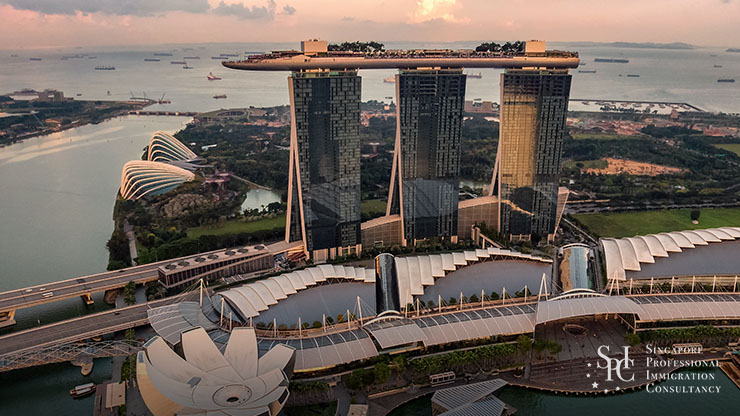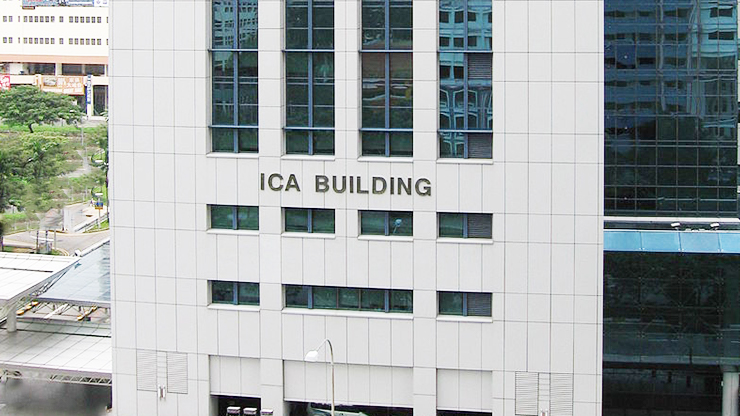Singapore is one of the few places in the world that has managed to create and maintain a universal healthcare system that is considered to be sustainable and is funded both by the government and by the public (through CPF contributions). In addition to this universal healthcare system, the majority of Singapore citizens (around 66%) also have private health insurance plans to supplement anything not covered by, or exceeding the coverage of, the universal healthcare system.
The country’s healthcare system is divided into three parts: the MediSave scheme, the MediFund scheme, and the MediShield Life scheme.
MediSave
This scheme is in the form of a mandatory savings fund where people pay between eight and 10.5% of their salary, depending on their age. It is suitable for most types of medical care, except for major medical disasters.
Any treatment that MediSave is used for is subsidised by the government. Patients can stipulate, depending on which hospital ward they decide to stay in, how much they want the government to subsidise their stay. Better wards will have lower government subsidies.
For example, depending on your monthly salary, choosing to stay in C-Class wards (8 beds) can result in a government subsidy between 65% and 80%. C-Class wards are often not equipped with air conditioning and rely mostly on natural ventilation. A B2 ward with six beds will get you a subsidy between 50% and 65%.
While there are withdrawal limits, the scheme will allow you to pay for a B2 or C-Class ward in a public hospital without much difficulty. In order to be covered for higher wards with fewer beds and air conditioning, you will need private health insurance.
MediShield Life
This scheme is not compulsory, and you can choose not to participate in it, but this scheme is designed as a protective factor in the case of serious health incidents that can otherwise have a catastrophic financial impact.
Expensive outpatient services like chemotherapy or high hospital bills are covered by MediShield Life. Furthermore, the government has made a promise that no individual will lose their coverage if they cannot afford the premiums. If you are in any way concerned about a serious medical condition, then this plan is for you.
MediFund
MediFund is an endowment fund that is reserved for citizens only. Only the other two schemes are available to permanent residents and their family members. It can also be accessed by citizens who are not able to afford their public healthcare bills.
Additionally, expats can also make use of International Health Insurance plans to access health care in Singapore. Regardless of which kind of health insurance you choose, it is essential that you have some healthcare available to you. Foreigners sometimes neglect this aspect because it is difficult to imagine that things might go horribly wrong while you are in another country. It is always best to be prepared, even for being hospitalised for an extended period elsewhere in the world. Make sure that you have access to affordable facilities and services in case of emergency.

Ministry of Health Singapore
Unlike other governments that offer universal healthcare, the Singaporean system does not tax its residents to fund their healthcare services. Instead, the Ministry of Health in Singapore will subsidise services, and they require residents to contribute monthly to a healthcare savings account, which is used to discount subsidised services.
Despite the struggles faced by the Ministry of Health, Singapore residents can rest assured as the government has declared that no individual will be denied medical care because they cannot afford it.
The major downside of this system is that medical costs can still exceed what the scheme pays out, even when you do not select luxury options in-hospital services and opt for the most subsidised wards, which results in amounts to be paid out of pocket.
It is highly likely that out-of-pocket expenses in Singapore’s healthcare system will only increase as time goes on. The birthrate is low, and the general population is ageing, and this is the perfect recipe for a financially strained public healthcare system. Older patients require even more attention for their healthcare needs and are more prone to situations like bed sores if not managed correctly. Even in the context of the pandemic and still recovering medical systems in the wake of the former Severe Acute Respiratory Syndrome outbreak from 2003, doctors and nurses are overextended, and the system is strained worldwide.
In terms of the Ministry of Health, Singapore government agencies regulate the public health system and, through these systems, provide affordable healthcare to the public in the form of subsidised wards that are separated by a class system; C-wards are the most subsidised wards and A-wards the more luxurious options with a much higher cost to the patients.
There are several aspects of the Ministry of Health that have been centralised in order to ensure fair and reliable functions:
- The Ministry of Health Holdings is a holding company that manages the infrastructure and development of public health care. National health systems also enjoy talent development from this holding. Subsidies include:
-
- The Agency for Integrated Care which manages community providers.
- Integrated Health information Services, which services technical systems for the public health care system.
- The Health Sciences Authority which regulates all aspects of quality, safety, and supply of health care products.
- The Agency for Care Effectiveness is the health care technology assessment agency.
- The Central Provident Fund Board which is in charge of the medical schemes discussed above.
- The Health Promotion Board which promotes healthy lifestyles in Singapore society.

Community Health Assist Scheme
The Ministry of Health launched this scheme in 2012 as a supplemental public healthcare scheme to lower or middle-income families. Furthermore, there is support for anyone born before 1950 who needs treatment for chronic, dental, or common health problems.
Assistance is dependent on their household income. The scheme was extended in 2019 to cover more conditions for middle-class families using medical clinics across the city. It is a highly affordable option, and the number of Singaporeans who use it today is ever-increasing.
Public Hospitals and Private Hospitals
An Integrated Shield Plan comprises your MediShield Life plan, your MediSave plan and your private health insurance. This is common for permanent residents. This way, private insurance supplements public health insurance and the higher costs of the private sector are not carried by citizens.
If you are neither a citizen nor a permanent resident, you will need to invest in an International Private Healthcare plan. Private policies will also provide cover for A and B1 class wards, not only for B2 and C-Class wards. While good quality medical treatment is provided in all wards, amenities like air conditioning is reserved for more expensive wards.
In some cases, an international company that the individual is employed by will purchase this kind of insurance for the individual and their family automatically as part of the employment contract when they are expected to travel for work purposes. Always check with your employer whether this will be the case in your situation and find out what kind of service and facilities are covered in the plan. Important information would include what percentage of the cost you will carry in certain situations and what kind of ward you can reside in during treatment and recovery.
Public Hospitals
Overall there are 11 public hospitals in Singapore. This includes 2x community hospitals, 1x children’s hospital, 1x women’s hospital, 1x psychiatric hospital, and 7x general hospitals. There are speciality clinics for dentistry, but other emergency, inpatient or outpatient services, are offered at these public hospitals.
Specialists are employed by public hospitals, and patients can choose from private rooms or wards with between four and nine hospital beds. There are several specialist outpatient services available in the public sector that are not directly connected to the hospitals.
What sets public hospitals in Singapore apart is the fact that waiting times are short, patients can visit the same doctor repeatedly, and the environment is quite comfortable.
Private Hospitals
There are ten private hospitals in Singapore. There are also several private clinics, and almost all of these are managed by three hospital groups:
- Raffles Medical Group
- Pacific Healthcare Holdings
- Parkway Holdings
Private hospitals are usually smaller than public hospitals; therefore, private patients enjoy more private care, akin to a more luxurious experience. Interestingly, however, expats who are not permanent residents will often favour private hospitals because the cost is similar to that of a public hospital for those who are not subsidised patients. You are basically looking at costs on a fee-for-service basis within the private sector.
Further Overview of Private Health Insurance: Singapore
Of course, by now, we understand that expats in Singapore who do not have PR or citizenship do have access to local subsidies, which means that even heavily subsidised wards for locals will not be subsidised at all for this demographic. If expats want to enjoy the benefits of the Singapore medical system, then they will have to do so with the help of either an international insurance plan or a private insurance plan that is available to foreigners. This would mean access to any class ward that the insurance plan covers, air-con in your room, full access to medical service and facilities, and other specialised relevant coverage as needed.
The difference between the private and public sector is notable, and there are several facilities and services that require an extended waiting period in the public sector. There are also several exclusions to amenities like air-con in heavily subsidised wards; these days, some rooms will be equipped with spot cooling systems, but that is not as reliable in circulating cool air as an actual air-con system. So, in addition to private level service and facilities, you can also enjoy an air-conditioned hospital room.
Other benefits include a private room that is not shared by a large number of other patients. There is sometimes an option to claim back costs involved in healthcare that is considered non-medical. You will also have more access to dental facilities and care, often unavailable to patients on local medical schemes. Another one of the substantial benefits involved with private plans is that there is often a savings plan or some kind of long-term monetary savings involved.
In addition to the many benefits, there are also some drawbacks to private plans. First and foremost is the cost. In addition to the high cost, it can be difficult to make sense of the products on offer. You would want to know what you pay for, but it can be difficult to make sense of it all. In such a case, it might be best to consult with an agency like SPIC, which can guide you through your options and lead you to a plan that covers your individual needs. Simply relying on a provider’s website is often not enough when it comes to your health.
Furthermore, there will likely still be excluded treatments and out-of-pocket expenses to pay. Criteria for coverage can be strict, and your age will likely have an impact.
There is no denying that Singapore has a world-class healthcare system, but we have also noted the difference between private and public hospitals. Your experience in a public hospital ward will be notably different from what is expected in private facilities. It is for this reason that despite high costs, many expats will invest in private healthcare insurance coverage or even an international health insurance plan so that they, and their families, can have access to a private hospital or other private healthcare facilities and medical centres should the need arise.
The key with private health insurance in Singapore is to ensure that critical illnesses are also covered in your plan. The best health insurance plan will always cover a hospital bill for emergencies, planned procedures, and critical illness; however, it can be difficult to find such a health insurance policy at a reasonable cost. Subsidised government healthcare services only cover so much, and many medical expenses are not entirely covered by some private insurance plans. It is advisable, for that reason, to engage with an agency that can offer expert advice and even some specialised packages from private insurers.
Healthcare costs are high in most parts of the world, and few countries will offer the security of universal healthcare the way that Singapore can, so even though this all may seem overwhelming, it is essential to remember that both public and private hospitals will provide world-class care to anyone with Singapore citizenship or PR and even those with employment passes, etc., provided they have the insurance to cover it.

National University Health System
This is a newer group of healthcare institutions dating back to 2008. It is in charge of numerous hospitals and speciality centres. The largest hospital in this group is National University Hospital. The group includes the Faculty of Dentistry and the School of Medicine of the Yong Loo Lin University.
In 2018, the Alexandra Hospital joined the group. Several recent medical breakthroughs are connected to the NUHS. It is thus a significant contributor to the World Scientific Publishing platform.
When you become part of an exchange program, or you intend to study abroad with the assistance of some kind of institution or agency, then you will often find that one of the requirements is to have international or local health insurance. This is to ensure that should you become ill or otherwise need to be hospitalised, an insurer will cover you. If you are relocating to Singapore yourself, then you will need to ensure this for yourself; the last thing you want is to lose the opportunity to complete your studies or your immigration plan due to a hefty medical bill.
Sustainable Universal Health Coverage
Generally speaking, Singapore’s healthcare system is considered sustainable healthcare financing because it does not place too much stress on the government or taxpayers to fund. However, the funding relies on market forces and interference from the government to keep health care costs down.
Should a significant disaster hit the city-state, the healthcare financing infrastructure might not be up to scratch to handle the costs of that. In such a case, one would need to hope that the investments made by the Ministry of Health are sufficient for Singapore’s health care system to recover monetarily along with the population.
Healthcare Services for Singapore Citizens and Permanent Residents
This is one of the significant differences between citizens’ and permanent residents’ privileges. Citizens will receive full and comprehensive access to Singapore’s heavily subsidised medical savings accounts. A permanent resident might receive some subsidisation, but not as much as a citizen.
This leads many expats and PRs to invest in Integrated Shield Plans, which is a mixed financing system combining the health savings account with supplemental private healthcare insurance. The way that Singapore’s healthcare system is set up, citizens will gain the most from it and will enjoy the most benefit from initiatives like the MediShield life coverage, with PRs coming in at a close second.
However, they will not enjoy the same level of subsidy as a citizen would. For expats who do not have PR status Singapore’s total health costs that patients pay can be quite high. So high, in fact, that many expats without PR will choose to rather use private care than public because the costs are practically the same in this case.
While a local GP can refer patients to suitable specialist care, it is often suggested that expats also research their own symptoms so that they can be sure that they are referred to the correct kind of specialist, especially since they can access specialist care without seeing a GP first. They can also refer themselves for things like dental care. Something to remember when a GP does want to refer you to a specialist in Singapore, many of the medical services are traditional and not western, so it is essential to ensure that you are referred to a western practitioner. You can check out their website ahead of time or call in before the date of your appointment to make sure that you are meeting with the right kind of practitioner.
The State of Health Care in Singapore
That being said, statistics on Singapore healthcare published both by the World Health Organization and Bloomberg Global Health Index makes Singapore seem like an extremely attractive choice when it comes to the quality of Singapore healthcare.
Regardless of whether a patient lands in public or private healthcare institutions, they are well cared for and receive excellent medical care. Anything from dental clinics to primary care networks, inpatient facilities, or clinical laboratories is available to any citizen in the city-state at relatively manageable costs in the public or private sectors.
Many Singaporeans might not consider something like an air-conditioned room to be essential and are pretty happy to share a ward with other locals. But for someone who is used to patient numbers in a western hospital ward might find the experience jarring. It is not uncommon for expats to opt to foot the bill for higher-class wards to avoid overcrowding conditions and to have more access to individual care from doctors and nurses. If this sounds like something that might affect you, then it is best to ensure that you have the resources to carry the bill if necessary. The best way to do this is to make use of private or international plans.
There are also additional benefits to Singapore’s health insurance system, such as the severe disability insurance scheme. Private insurance can help to cover costly outpatient treatments that might not be covered in your existing health insurance schemes. And overall, things like these are what sets Singapore close to the top of the list of the world’s health systems.
They have managed to ensure access to primary care for just about anyone and have made private healthcare attainable to many people in the general population. There are even additional schemes to support costly selected outpatient treatments that might not be covered by the main health insurance schemes available to the public, and they have achieved all of this with a notably low current health expenditure point. All of these factors help to maintain the sustainability of the ambitious venture.
If you have found this article helpful, then feel free to contact one of our consultants today. If you are looking for an article on a different topic, check out our blog pages to see what other information we have made available to the public.
Does the System for Health Insurance work in Singapore?
Although health insurance in Singapore can often be confusing, it definitely works, perhaps even better than some other systems that promise universal care. The reality is that even with some subsidised healthcare in the country, you could have access to a private healthcare facility as in some cases, the subsidy for Singapore citizens is high enough – and the price difference between public and private healthcare facilities low enough – to allow for some medical treatment at private healthcare facilities at an affordable cost with the help of additional insurance schemes. But of course, for this to realise, you will have to be a Singapore citizen and have private health insurance in Singapore in addition to what is offered by the government.
Furthermore, if you compare healthcare in Singapore with, for example, the US healthcare system, then it is safe to say that insurance coverage is arguably better and healthcare costs lower in Singapore.
Singapore offers further hospital coverage through initiatives like the Integrated Shield Plan. In terms of insurance options, the Integrated Shield Plan is an additional plan that is available in Singapore to cover even more medical costs than what is already covered by, for example, Medishield Life Premiums on their own, etc. Integrated Shield Plans are offered as private insurance options that cover more health risks, further outpatient treatment, more critical illnesses, surgical procedures, specialist consultations, and expenses related to a family doctor or Singapore prescription for major medication such as cancer drugs.
Government benefits might only offer rudimentary coverage of a specific critical illness, whereas this kind of extended plan will cover the rest. Unlike the Central Provident Fund, however, this added medical coverage is voluntary. One must also remember that the Central Providence Fund itself can be a source of assisted payment for medical treatment.
When it comes to medical institutions in Singapore, there are several hospitals and clinics in the city. The Singapore General Hospital doubles as a training institute and is one of the largest Singapore hospitals. Changi General Hospital, which is also a public facility, is world-renowned and has won several accolades. If you are looking for something smaller, then remember that it is likely that your neighbourhood will have a small private clinic, and depending on your insurance policy, you could also access one of the many larger private facilities in the city.
Singapore remains one of the best-equipped countries in the world when it comes to medical infrastructure and the provision of medical care to its people. So much so, in fact, that Singapore continues to attract medical tourists from across the world.
So do not be overwhelmed by the state of medical care in Singapore; simply contact SPIC for your free consultation so that one of our expert consultants can talk you through it and help you make one of the most important decisions of your life.

 APPLY FOR SINGAPORE PR 2023/2024
APPLY FOR SINGAPORE PR 2023/2024 

